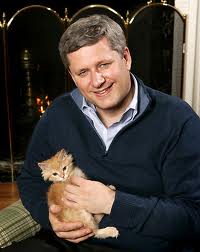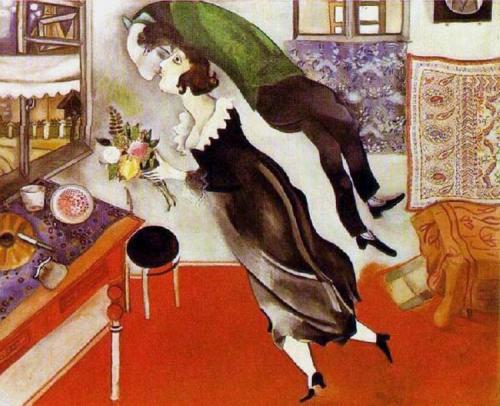httpv://www.youtube.com/watch?v=GMwcECnCN_s
This will be a pleasant and welcome surprise.
httpv://www.youtube.com/watch?v=GMwcECnCN_s
This will be a pleasant and welcome surprise.

Solar, wind and geothermal are becoming more viable, and fusion is only twenty years away. Video from Big Think here.
Expect the corporatists to ramp up global warming denialism as all of this becomes more apparent. After all, what’s in it for Exxon-Mobil, the richest company in the world?
Or, closer to home, what’s in it for Alberta, which has 10% of the country’s population but now seems to represent 100% of the government’s priority?
http://www.youtube.com/watch?v=jA_BBGuCs20
A 2009 documentary about the deadly toxicity of Alberta’s tar sands. This remains true despite the crooning lullaby of TV ads from a tar sands advocacy group that is beginning to slither into view.
This is how you monitor significant changes in Harperworld: by the commercials it circulates among what it hopes is a drowsy-and-ready-to-sleep population.

…On Harperworld, a glimpse into what Stephen Harper has in mind for Canada as “an energy superpower,” as he has characterized it. The plan includes Canada moving up the scale of carbon dioxide producers; we’re currently at number 7, which is especially high considering our population makes up only .5% of the world’s population. Per capita, we are the worst of the worst. (France, which has about twice our population, doesn’t even make the top 10.)
For those who aren’t clear on this, in 2002 Canada ratified the Kyoto Protocol, which the Harper government has simply walked away from (clearly to Alberta’s advantage, which is what all of this is really about). Our commitment under Kyoto was a modest reduction of greenhouse gas emissions to 6% below 1990 levels by 2012. It’s not just that we aren’t even close, it’s that the Harper government’s contempt for our international treaty obligations has put us an astounding 24% above 1990 levels, and rising.
Harper’s also planning some sabre-rattling in the Arctic over gas and oil reserves. We have no reason to be showing our war face because there is already a long standing international panel negotiating the sovereign claims of a number of arctic countries, including of course the U.S., Canada, Norway and Russia. Norway and Russia, in fact, have already negotiated a settlement on disputed claims without a single shot fired in anger. But Harper wants to mix it up with troop deployments and, eventually, those shiny new jets, so that’s what we’re going to do. It’s the Russians specifically we will be baring our teeth to. So that should go well. This is completely contrary to Canada’s long history of superior diplomacy in such matters. We are not war makers. We are peace keepers. But not in Harperworld.
Finally, the only reason there is any negotiation necessary among the nations involved in these claims disputes is that global warming is reducing the Arctic’s seasonal ice, making those resources more accessible. That’s the same global warming the oil companies invest tens of millions of dollars every year to deny is even occurring. It’s a death spiral of cognitive dissonance: global warming is not occurring, but its occurrence makes available fossil fuel reserves that will in turn exacerbate global warming — which is not occurring.
Canada, by way of the Harper government, is apparently going to be a charter member of this suicide pact. And it’s doing so with the support of just 39% of the voting population, something the remaining 61% ought to keep in mind.
We will, of course, also have lots of Frye to provide perspective on our wretched history of exploiting and despoiling our wilderness whose ecosystem we hold in trust.
http://www.youtube.com/watch?v=pJ51BNYXbV4
Louis CK demonstrates how to capture a hangover on film. Like being blasted into a parallel dimension where you don’t speak the language.

Continuing with our “Frye on God” thread: we have so far been considering the “death of God.” We can now move on to consider the God that survives. From Creation and Recreation:
I want to begin with what is called “creativity” as a feature of human life, and move from there to some of the traditional religious ideas about a divine creation. It seems to me that the whole complex of ideas and images surrounding the word “creation” is inescapably a part of the way that we see things. We may emphasize either the divine or the human aspect of creation to the point of denying the reality of the other. For Karl Barth, God is a creator, and the first moral to be drawn from this is that man is not one: man is for Barth a creature, and his primary duty is to understand what it is to be a creature of God. For others, the notion of a creating is a projection from the fact that man makes things, and for them a divine creator has only the reality of a shadow thrown by ourselves. But what we believe, or believe that we believe, in such matters is of very little importance compared to the fact that we go on using the conception anyway, whatever name we give it. We are free, up to a point, to shape our beliefs; what we are clearly not free to do is alter what is really a part of our cultural genetic code. We can throw out varieties of the idea of creation at random, and these, in Darwinian fashion, will doubtless descend through whatever has the greatest survival value; but abolish the conception of itself we cannot. (CW 4, 36)

Chagall’s “Birthday,” 1915
Further to Michael’s previous post:
It goes without saying that Frye’s encyclopedic range of interest in and knowledge of the variety of art forms that make up a society’s imaginative culture is remarkable, unmatched by anyone I can think of. A good example is his essay “Literature and the Visual Arts” in CW 18, originally published in Myth and Metaphor. Frye’s wife Helen, of course, had a blossoming career as an art historian before Frye became a going concern and all hell broke loose; doubtless her interests, and of course his interest in Blake, helped to awaken his own affinity for the visual arts.
It is worth mentioning that the Art Gallery of Ontario is hosting an exhibit of Chagall’s work (and some Kandinsky), October to January. You can check it out here.
The AGO, by the way, has had a great new face lift, and is really worth visiting. I caught the New York Abstract/Expressionism (Pollock et al) this spring, and it was a real treat. The new CEO of the gallery, Matthew Teitelbaum, seems to have a magic touch.
A beautifully assembled collection of Chagall paintings, with music by Maurice Sklar
Today is Marc Chagall‘s birthday (1887-1985). Maybe one of the gentlest people ever to be a great artist, who was rewarded with an extraordinarily long life.
Frye in a single-paragraph review of The Art of Russia, in Canadian Forum, December 1946:
A very useful collection of black and white reproductions illustrating Russian painting from medieval icons on. It appears from it that after the seventeenth century, Russia become the Eastern colony of European art as America became the Western one, and Russia like America lost the ability to resist cultural invasions at the same time that she gained the ability to resist military ones. All the European fashions in painting seem to have rolled over Russia in waves, most of them dyed with a strong Germanic tinge by the time they arrived. The Revolution helped release a tremendous burst of creative energy, and the art of Lissitsky, Malevich, Chagall, and Kandinsky was the result; but, following a directive of Lenin, this energy was soon gleichgestaltet [forced into conformity] and a rather corny “socialist realism,” supposed to be directed more directly to the masses, took its place. The same development occurred in America under the WPA, where however, a more relaxed policy permitted the growth of more variety. (CW 11, 114)
Clip from an interview in which Faulkner explains why The Sound and the Fury is his personal “best beloved” novel
William Faulkner died on this date is 1962.
Frye in The Modern Century. The reference is brief, but the context — the revolutionary ideals of liberty, equality and fraternity considered in a religious context — is telling. We can just sneak this one into our continuing consideration of Frye on God.
Matthew Arnold warned the dominant bourgeoisie of Victorian England that a society could pursue liberty to the point of forgetting about equality. Today, with capitalism in a counter-reformation period and with totalitarianism thought of a something foreign, we prefer to be reminded that society — that is, other societies — can purse equality to the point of forgetting about liberty. But neither political democracy nor trade unions have developed much sense of the third revolutionary ideal of fraternity — the world “comrade” has for most of us a rather sinister and frigid sound. Fraternity is perhaps the ideal that the leisure structure has to contribute to society. A society of students, scholars, and artists is a society of neighbors, in the genuinely religious sense of that word. That is, our neighbor is not, or not necessarily, the person in the same national or ethnical or class group with ourselves, but may be a “good Samaritan” or person to whom we are linked by deeper bonds than nationality or racism or class solidarity can provide. There are bonds of intellect and imagination as well of love and good will. The neighbor of a scientist is another scientist working on similar lines, perhaps in a different continent; the neighbor of a novelist writing about Mississippi is (as Faulkner indicated in his Nobel Prize speech) anybody anywhere who respond to his work. (CW , 57-8)